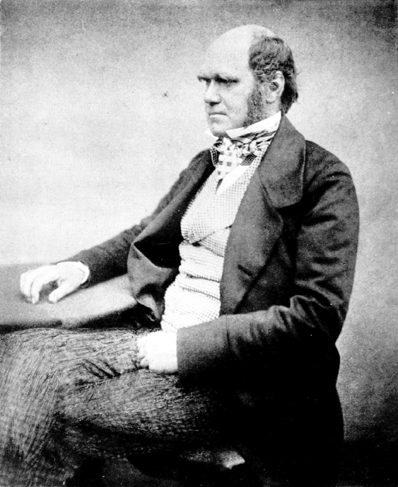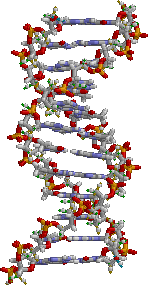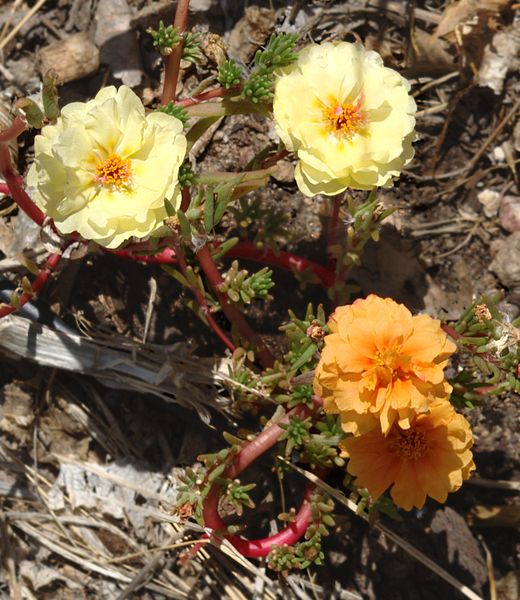A Guide To Evolution
The Father Of Evolutionary Thought

Examing The Evidence For Evolution
Peppered Moth Variation


Darwin's Finches

Speciation Explained
Co-Evolution And Mutual Dependency

DNA

The Basics
Evolution is the process of change in the inherited characteristics of populations of animals over time. The crux of this theory is that all life today has evolved and diverged from simple ancestors that lived in the seas over 3 billion years ago. This means that all animals are related to each other. Accumulated evidence from biology, genetics, and fossils supports evolution as the unifying theory that directs our understanding of life and its history.
Evolution is famously known for its large-scale patterns of change, also known as ‘macroevolution.’ Macroevolution refers to large-scale changes such as the evolution of limbed vertebrates from those with fins. Other examples of macroevolution are the emergence of the shelled egg, freeing some land living, four limbed animals from dependence upon water for reproduction and the divergence of egg laying reptiles into other major groups, including turtles and crocodiles. This occurs as a result of small scale descent with modification, known as ‘microevolution.’ For example, since their introduction to the United States of America, house sparrow populations in the north and south of the continent have developed differences, with the northern variant becoming bigger, probably as an adaptation to climate change.
We often hear animals, including ourselves described as a species. But what is a species exactly? Well, in amongst other meanings a species can be basically defined as a group of similar organisms that can interbreed to produce fully fertile offspring. Speciation is the process whereby new species evolve from a single ancestral species. This occurs for a number of reasons, such as geographical isolation arising from habitat fragmentation. If a small population is isolated from the main group and its members can only share genes with each other, over time they will evolve independently to the point where, if they came back into contact with the original group, they wouldn't be able to interbreed.
Over vast periods of time, repeated speciation has led to evolutionary divergence, where new descendent species become significantly different from their common ancestors. For instance, all life on land has diverged from water living ancestors, and all living species of mammal have diverged from a common ancestral mammal like creature that lived alongside the dinosaurs. These series of changes arise as a product of Earth’s dynamic environments, which vary from place to place and from time to time.
Sometimes though, different organisms will evolve similar characteristics to adapt to the environment that they inhabit. For example, the similarity in body forms of whales, seals, and penguins is the result of similar ways of life. The common factor is the adaptation of a streamlined body shape, with reduced limbs for a more efficient swimming motion. In a similar way, wings have evolved independently in birds and bats for flight. This is often known as convergent evolution.
Before I proceed to describe the different evolutionary processes, I shall briefly summarise the building blocks of life, the tiny molecules that make evolution and our lives possible- DNA and genes.
Every form of life is made up of a specific series of molecules, and the order of molecules is contained in a chemical code. This code is extremely complex and is encased in spiral-shaped molecules of deoxyribonucleic acid (DNA). Chemicals known as bases, link each molecule of DNA. There are four different kinds- adenine, cytosine, guanine and thymine. They are always linked up in pairs, with adenine always fusing with thymine, and cytosine with guanine. The sequence of these bases makes up the cell’s genetic code. The code found in each human cell consists of 20,000-25,000 separate instructions. Each of these instructions is known as a gene, and each gene is responsible for controlling certain characteristics. For example, there is a single gene that is responsible for the colour of eyes. Genetics is the study of how these characteristics are inherited and is one of the central pillars of biology.
Sharing A Common Ancestor

A Highly Recommended Link
- Evolution 101: Mechanisms of Evolution
A very well presented website that summarises the evolutionary processes in a clear and concise way.
An Example Of Mutation

Genetic Drift Explained
Gene Flow Made Easy
A Highly Recommended Link
- Evolution 101: Genetic Shuffling
A website that explains gene shuffling in a very clear way. Includes a helpful diagram that shows how it influences our appearance and characteristics.
The Five Basic Processes Of Evolution
I shall now summarise the mechanisms that enable evolutionary change to occur, using a hypothetical species of butterfly as an example. Now, originally this particular species was bright yellow, but a chance mutation in the genetic material of one of the yellows resulted in the birth of a purple butterfly. Over a sufficient amount of time, it’s possible that the populations of the yellows and purples could strike even.
Firstly I shall explain how a population of yellow butterflies produced a purple one. As already mentioned, it occurred through chance mutation. A mutation is brought about by a change in the genetic material of an organism that is subsequently inherited by its offspring. This chance alteration can happen through deletion or insertion of a single base in a DNA molecule. Occasionally, single mutations may produce large effects but generally, evolutionary change is the result of many mutations.
The first and most widely known process is natural selection, which is often described as ‘the survival of the fittest.’ Now imagine another hypothetical species of butterfly that varies in colour (yellow/purple) and reproduces in large numbers, not all of which survive, due to limited resources in the environment. Predators eat more of the purples, as they are less camouflaged than the yellows. The surviving yellows produce more of their own kind. With continued predator preference over time, the yellow butterflies become dominant.
Another evolutionary process occurs through a random change in the genetic makeup of a population over time, which is known as genetic drift. For example, a forest fire wipes out most of the purple butterflies in the population. The next generation contains the genes of the lucky survivors, not necessarily the ‘fitter’ ones. Despite being unlikely, it is even possible for a series of chance events to lead to the total loss of the purple population.
Yet another evolutionary process is gene flow (or migration), which results from the movement of genes from one population to another. For instance, genes are carried from one population and introduced to another by the migration of an adult organism. In this example, a purple butterfly leaves a purple population and joins a yellow population. The migrant interbreeds with members of the yellows and, in doing so, introduces its purple genes into the yellow population.
The most interesting process, at least from our point of view is something called gene shuffling. It’s the reason why every single individual human, and indeed every other sexually reproducing organism is unique; it’s all to do with the reshuffling of parental genes. Offspring are genetically identical to each other (except identical twins), nor to one or other parent, but show various combinations of their parents’ genes. New gene combinations, and hence genetic variation, are introduced into a population through the mechanism of sex.
Highly Recommended Literature









